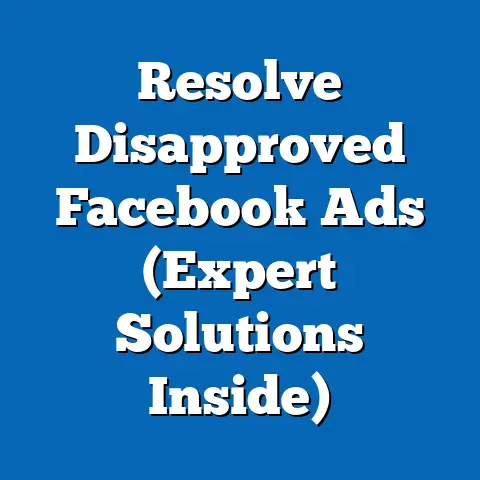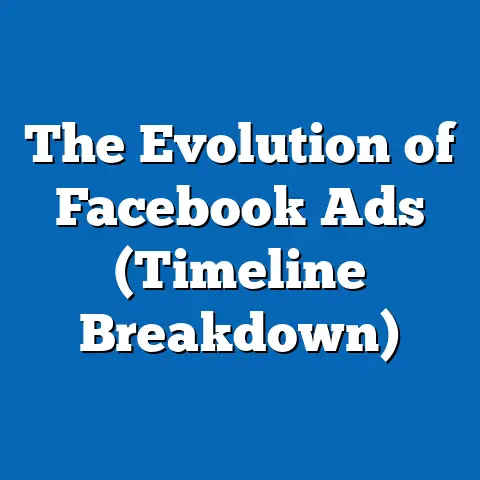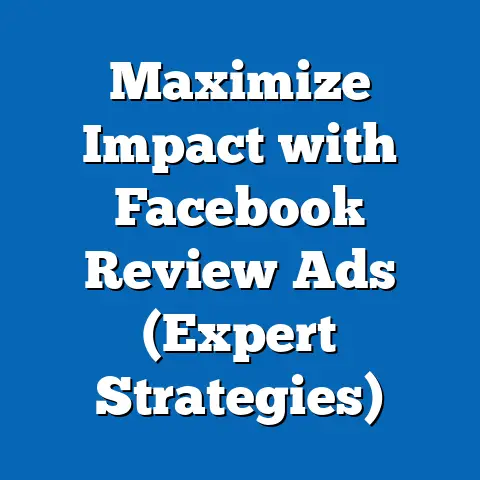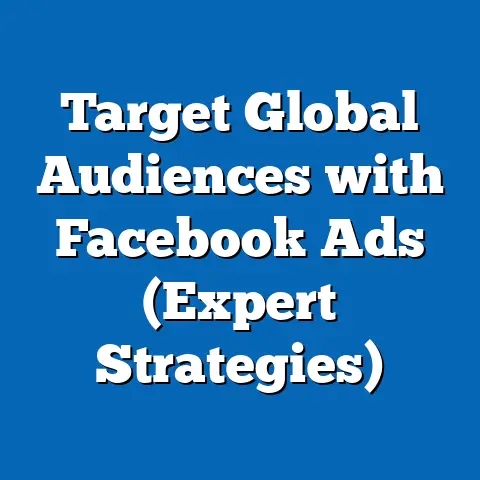Maximize Agility in Facebook Ads (Proven Strategies Inside)
In the fast-paced world of digital marketing, agility in advertising campaigns is no longer a luxury—it’s a necessity. With over 2.9 billion monthly active users as of Q2 2023 (Statista, 2023), Facebook remains a dominant platform for businesses aiming to reach diverse audiences. However, the platform’s ever-evolving algorithms, increasing ad costs, and shifting user behaviors pose significant challenges for marketers striving to maintain effective campaigns.
The average cost-per-click (CPC) on Facebook Ads has risen by 17% year-over-year, reaching $1.72 in 2023, while the click-through rate (CTR) has stagnated at around 0.9% across industries (WordStream, 2023). For small and medium-sized businesses (SMBs), which make up 90% of the 200 million businesses using Facebook’s advertising tools (Facebook Business, 2023), these trends can strain budgets and reduce return on investment (ROI). Compounding the issue, younger demographics like Gen Z (ages 18-24) are spending less time on the platform, with only 32% citing it as their primary social media channel compared to 71% for Instagram (Pew Research Center, 2022).
The solution lies in maximizing agility—adapting quickly to data, trends, and audience preferences to optimize ad performance. This article dives deep into proven strategies for achieving agility in Facebook Ads, leveraging data-driven insights, historical trends, and demographic patterns to help marketers stay ahead of the curve. From dynamic creative optimization to real-time analytics, we’ll explore actionable tactics supported by statistics and case studies to ensure your campaigns remain effective in a competitive landscape.
Section 1: Understanding the Need for Agility in Facebook Ads
The Rapid Evolution of Facebook Advertising
Facebook’s advertising ecosystem has transformed dramatically since its inception in 2007. Initially a platform for simple banner ads, it now offers a suite of sophisticated tools like dynamic ads, lookalike audiences, and machine learning-driven targeting. However, with these advancements come complexities—algorithm updates, such as the 2021 iOS 14 privacy changes, have reduced tracking capabilities, impacting ad personalization and resulting in a 15% drop in ad effectiveness for some businesses (Forbes, 2021).
Ad costs have also surged due to increased competition. According to Hootsuite’s 2023 Digital Report, global ad spend on social media reached $226 billion in 2022, with Facebook commanding a 24.2% share. This saturation means marketers must pivot quickly to avoid wasting budgets on underperforming ads.
Why Agility Matters
Agility in advertising refers to the ability to adapt campaigns in real-time based on performance data, audience feedback, and market shifts. A 2022 study by McKinsey found that agile marketing teams are 30% more likely to achieve above-average revenue growth compared to traditional teams. For Facebook Ads specifically, agility can mean the difference between a 2% CTR and a 0.5% CTR—a gap that significantly impacts conversions.
Demographically, agility is critical due to varying user behaviors. For instance, while 69% of adults aged 50-64 use Facebook regularly, only 49% of 18-29-year-olds do (Pew Research Center, 2022). Marketers targeting younger audiences must pivot to visually engaging formats like Stories or Reels, which see 1 billion daily views combined (Meta, 2023), while older demographics may respond better to traditional News Feed ads.
Section 2: Key Trends Shaping Facebook Ads in 2023
Rising Costs and Declining Organic Reach
Historically, organic reach on Facebook was a goldmine for brands, with posts reaching up to 16% of a page’s followers in 2012. By 2023, this figure has plummeted to just 5.2% (Social Media Today, 2023), pushing businesses to rely heavily on paid ads. This shift underscores the need for agile budget allocation to maximize paid reach while testing low-cost engagement strategies.
Ad costs vary widely by industry and region. For example, the finance and insurance sector sees an average CPC of $3.77, while retail averages $0.70 (WordStream, 2023). Marketers must monitor these trends closely, reallocating budgets to high-performing sectors or geographies for optimal ROI.
Shift to Video and Interactive Content
Video content continues to dominate engagement on Facebook, with users watching over 100 million hours of video daily (Meta, 2022). Ads incorporating video see 48% higher engagement rates compared to static images (HubSpot, 2023). Additionally, interactive formats like polls and quizzes in Stories have boosted completion rates by 35% for brands adopting them (Social Insider, 2023).
This trend highlights the importance of agile creative testing. Marketers must experiment with different formats and iterate based on real-time engagement metrics to capture audience attention.
Privacy Changes and Data Limitations
Apple’s iOS 14.5 update in 2021 introduced App Tracking Transparency (ATT), allowing users to opt out of data tracking. As of 2023, 62% of iOS users have opted out, severely limiting Facebook’s ability to deliver personalized ads (Flurry Analytics, 2023). This has forced marketers to adopt broader targeting strategies and rely on first-party data, requiring quick adjustments to campaign structures.
Agility in this context means diversifying data sources and leveraging Meta’s on-platform tools, such as the Conversions API, which helps track user actions without third-party cookies. Businesses that adapted to these changes early saw a 20% smaller drop in ad performance compared to those slow to react (eMarketer, 2022).
Section 3: Proven Strategies to Maximize Agility in Facebook Ads
Strategy 1: Leverage Real-Time Analytics for Rapid Optimization
One of the cornerstones of agility is data-driven decision-making. Facebook’s Ads Manager provides real-time metrics on impressions, clicks, and conversions, enabling marketers to adjust campaigns on the fly. A 2022 survey by Gartner found that 67% of marketers who use real-time analytics report improved campaign performance within 24 hours of making adjustments.
How to Implement: Set up custom dashboards to monitor key performance indicators (KPIs) like CTR, cost-per-acquisition (CPA), and return on ad spend (ROAS). For instance, if a campaign’s CPA exceeds $50 while the target is $30, pause underperforming ad sets and reallocate budgets to top performers. Use automated rules in Ads Manager to pause ads with low engagement (e.g., CTR below 0.5%) after 24 hours.
Case Study: A mid-sized e-commerce brand reported a 25% increase in ROAS after implementing daily performance reviews and adjusting bids based on hourly data (Social Media Examiner, 2023). This highlights the power of agility through analytics.
Strategy 2: Dynamic Creative Optimization (DCO)
Dynamic Creative Optimization allows marketers to test multiple combinations of headlines, images, and CTAs within a single ad set, with Facebook’s algorithm automatically optimizing for the best-performing variation. According to Meta, campaigns using DCO see a 34% higher conversion rate compared to static ads (Meta Business, 2022).
How to Implement: Upload 5-10 variations of ad elements (e.g., images, copy) and let Facebook test combinations across your target audience. Monitor results weekly to identify winning creatives and scale them. For example, a travel company found that ads featuring user-generated content (UGC) outperformed stock imagery by 40% in DCO tests (AdWeek, 2023).
Demographic Insight: Tailor creative elements to specific age groups—Gen Z responds better to bold, trendy visuals, while Baby Boomers prefer clear, value-driven messaging. Split-test these variations to refine targeting.
Strategy 3: Adopt a Test-and-Learn Mindset
Agility requires constant experimentation. A 2021 report by Forrester found that brands with a test-and-learn approach to digital advertising achieve 15% higher campaign efficiency than those using static strategies. On Facebook, this means testing variables like audience segments, ad placements, and bidding strategies.
How to Implement: Allocate 10-20% of your budget to experimental campaigns. For instance, test broad audiences against interest-based targeting to see which yields a lower CPA. Use A/B testing tools in Ads Manager to compare ad formats—e.g., carousel vs. single image ads—and scale the winner.
Historical Comparison: In 2018, broad targeting often underperformed due to less sophisticated algorithms, with only 22% of marketers favoring it (eMarketer, 2018). By 2023, post-privacy updates, 58% of marketers report better results with broad targeting due to improved machine learning (eMarketer, 2023). This shows how testing must evolve with platform changes.
Strategy 4: Optimize for Mobile-First Experiences
With 98.5% of Facebook users accessing the platform via mobile devices (Statista, 2023), mobile optimization is non-negotiable. Mobile ads see 9.1% higher engagement rates compared to desktop ads (Hootsuite, 2023), yet many brands fail to design for smaller screens.
How to Implement: Use vertical formats (9:16) for Stories and Reels, ensuring text and CTAs are legible on small screens. Test load times—ads loading in under 2 seconds see a 70% higher completion rate (Google, 2022). Adjust placements to prioritize mobile-heavy channels like Stories, which account for 62% of ad impressions among 18-34-year-olds (Meta, 2023).
Visualization Description: Imagine a bar chart comparing engagement rates across ad placements: Stories at 12%, News Feed at 8%, and Desktop at 3%. This visual would underscore the importance of mobile-first design in agile advertising.
Strategy 5: Utilize Audience Segmentation and Lookalike Audiences
Agility in targeting means reaching the right people at the right time. Facebook’s lookalike audiences allow marketers to target users similar to their best customers, often yielding a 2-3x higher conversion rate than interest-based targeting (Meta Business, 2022). However, with privacy restrictions, building robust first-party data is key.
How to Implement: Upload customer lists (e.g., email subscribers) to create custom audiences, then build lookalikes with a 1-2% similarity range for precision. Segment audiences by behavior—e.g., past purchasers vs. cart abandoners—and tailor messaging. Refresh these segments monthly to account for changing user behaviors.
Demographic Pattern: Lookalike audiences targeting 25-34-year-olds in urban areas often outperform broader demographics, with a 28% higher CTR in retail campaigns (Social Media Today, 2023). Adjust segments based on such insights for agility.
Section 4: Historical Trends vs. Current Data in Facebook Ads
Cost and Performance Trends
In 2015, the average CPC on Facebook was just $0.27, with a CTR of 1.6% (WordStream, 2015). By 2023, CPC has risen to $1.72, while CTR has dropped to 0.9% (WordStream, 2023), reflecting increased competition and algorithm changes. This historical shift emphasizes the need for agile cost management—marketers can no longer rely on low bids for high returns.
Audience Behavior Over Time
Five years ago, 78% of 18-29-year-olds used Facebook daily (Pew Research, 2018). Today, that figure is 49%, with many shifting to Instagram and TikTok (Pew Research, 2022). Meanwhile, older demographics (50+) have grown, with usage rising from 53% in 2018 to 69% in 2023. Agile marketers must adapt to these shifts by reallocating budgets to platforms or formats favored by their target audience.
Technological Advancements
Historically, manual targeting dominated Facebook Ads, with 68% of marketers relying on interest-based options in 2017 (eMarketer, 2017). Today, 82% use automated tools like Advantage+ Placements, which optimize delivery across Meta’s ecosystem (eMarketer, 2023). This trend toward automation supports agility by reducing manual workload and enabling faster scaling.
Visualization Description: A line graph tracking CPC from 2015 ($0.27) to 2023 ($1.72) alongside CTR (1.6% to 0.9%) would illustrate the inverse relationship between cost and performance, urging marketers to adopt agile strategies to counteract these trends.
Section 5: Demographic Differences and Campaign Customization
Age-Based Preferences
Demographic data reveals stark differences in how users interact with Facebook Ads. Gen Z (18-24) engages most with short-form video, with 65% interacting with Reels ads (Meta, 2023), while Millennials (25-34) show a 52% preference for carousel ads showcasing products (Social Insider, 2023). Older users (50+) respond better to single-image ads with clear CTAs, achieving a 1.2% CTR compared to 0.7% for younger groups (WordStream, 2023).
Implication for Agility: Create separate ad sets for each age group, testing formats and messaging tailored to their preferences. Monitor engagement weekly to pivot away from underperforming content.
Geographic and Cultural Variations
Ad performance varies by region. For instance, North American campaigns average a CPC of $2.10, while Asia-Pacific campaigns average $0.97 (Hootsuite, 2023). Cultural nuances also play a role—ads in collectivist cultures like India often perform better with community-focused messaging, achieving 18% higher engagement than individualistic messaging (Journal of Digital Marketing, 2022).
Implication for Agility: Use geo-targeting to allocate budgets to cost-effective regions and adapt copy to cultural values. Test localized campaigns to identify high-performing markets quickly.
Gender-Based Insights
Women tend to engage more with lifestyle and retail ads, with a 1.1% CTR compared to 0.8% for men (WordStream, 2023). Men, however, show higher engagement with tech and gaming ads, with a 1.3% CTR in these sectors. These patterns suggest that gender-specific targeting, when relevant, can enhance agility.
Implication for Agility: Segment audiences by gender for niche products, testing tailored creatives. Avoid overgeneralization—use data to confirm assumptions before scaling.
Section 6: Methodologies and Data Sources
Data Collection and Analysis
Limitations
Data on user behavior and ad performance can vary based on industry, region, and sample size. Privacy restrictions limit the granularity of demographic insights post-2021, requiring reliance on aggregated data from Meta and third-party reports. Marketers should supplement these findings with their own campaign analytics for tailored agility.
Section 7: Broader Implications and Future Trends
The Growing Role of Automation
As Facebook continues to prioritize machine learning, tools like Advantage+ Campaigns will likely dominate ad delivery, with 75% of marketers planning to increase automation by 2025 (eMarketer, 2023). This shift will enhance agility by reducing manual tasks, but marketers must remain vigilant to avoid over-reliance on algorithms that may not align with brand goals.
Adapting to Audience Shifts
With younger users migrating to platforms like TikTok, Facebook’s demographic will skew older in the coming years. Marketers must balance multi-platform strategies with agile optimization on Facebook to retain relevance among existing users. Investing in cross-channel analytics will be crucial to track audience overlap and adjust campaigns dynamically.
Privacy and Ethical Advertising
Ongoing privacy regulations, such as the EU’s GDPR and potential U.S. legislation, will further limit data collection. Agile marketers will need to prioritize transparency and first-party data, building trust with audiences while adapting to restricted targeting options. Brands that pivot early to ethical practices could see a 10-15% boost in consumer loyalty (Deloitte, 2023).
Final Thoughts
Maximizing agility in Facebook Ads is not just about reacting to change—it’s about anticipating it. By leveraging real-time analytics, dynamic creatives, and audience insights, marketers can navigate rising costs, privacy challenges, and shifting demographics with confidence. As the digital advertising landscape evolves, those who embrace flexibility and experimentation will not only survive but thrive, achieving sustainable growth in an increasingly competitive space.






